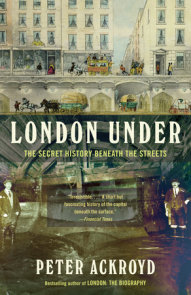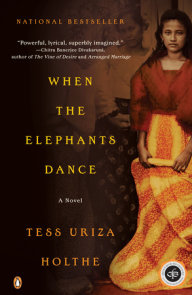READERS GUIDE
The questions, discussion topics, and reading list that follow are designed to enhance your group’s reading of Peter Mayle’s delightful books about life in Provence, where he and his wife bought a two-hundred-year-old stone farmhouse nestled in the foothills of the Lubéron Mountains.Introduction
Summer after summer, the Mayles had fled London in search of two or three weeks under the Mediterranean sun, promising themselves that one day they would make Provence their home. "We had talked about it," Mayle writes in A Year in Provence, "during the long gray winters and damp green summers, looked with an addict’s longing at photographs of village markets and vineyards. . . . And now, somewhat to our surprise, we had done it." Each season in their adopted homeland, they soon discover, brings its share of surprises, and every undertaking becomes a small adventure as they adjust to the rhythms of rural life, to the charming idiosyncrasies of the local population, and to a language that at times bears only a passing resemblance to the lessons on their French language tapes. The sense of urgency that ruled their northern, urban lives gives way to an acceptance of the gentler pace of the south. The renovations on their house take months longer than promised, but the workmen’s good humor, enthusiasm, and consummate skill more than compensate for the inconvenience of wintering without kitchen walls, central heating, and dependable electricity. Routine errands to the village become opportunities to wile away hours observing hotly contested games of boules, reading the ever-intriguing gestures that punctuate every street corner conversation, or listening to resident experts hold forth on the weather, history, the behavior of tourists, and local scandals while sipping a pastis at the café. Meals–whether eaten at home, at a neighbor’s, or in one of the dozens of small, family-run restaurants throughout the region–are long, leisurely occasions, dedicated to celebrating Provence’s agricultural bounty, the wines of its productive vineyards, glistening olive oils that range in color from jade green to transparent gold, and, during a short, much-anticipated season, Provence’s gastronomic gem, the truffle.Mayle’s unbounded curiosity, his well-honed powers of observation, and his wry sense of humor resonate in his tales and in his detailed portraits of the people he encounters–from the plumber with a penchant for philosophizing to the not-always-welcome guests who arrive from colder climes every summer. The books include plenty of tips and recommendations for those who contemplate visiting Provence. But Mayle’s real talent is that he makes it possible to enjoy the sights, sounds, smells, and tastes of this special corner of the world without leaving the comfort of one’s own reading chair.
In A Year in Provence, Mayle offers an month-by-month account of the ups and downs he and his wife experience as they oversee the restoration of their house; the effect of the passing seasons on the landscape and on local activities; and the pleasures provided by a variety of charming, if sometimes eccentric, neighbors.
Questions and Topics for Discussion
1. How well did Mayle’s frequent trips to Provence as a tourist prepare him for the reality of residing there? What were some of the initial surprises he and his wife encountered?
2. How does the form of the book–a month-by-month journal–enhance the immediacy of Mayle’s observations and draw the reader into his experiences? How do the changing seasons mirror Mayle’s own adjustment to his new environment?
3. Mayle writes that neighbors take on an importance in the country that they don’t have in the city [p. 6]. How do his relationships with Faustin, Massot, Menicucci, and the other local workmen reflect this? Does the fact that Mayle is a foreigner influence the way he is treated? How do the men working on his house endear themselves to Mayle, despite his continuing frustrations with their casual attitude about completing the job?
4. Mayle notes there are "two areas of endeavor in which France leads the world– bureaucracy and gastronomy" [p. 23]. What particular characteristics of the French does Mayle bring to light in stories about the bureaucracy involved in buying the house, a car, insurance, and other necessities?
5. The influx of tourists begins in May and reaches a high point in August. How does his status as a resident affect Mayle’s attitudes about friends and acquaintances who, as he himself once did, try to take in everything Provence has to offer during a short holiday? Does he learn things about himself and the life he has chosen by looking through the eyes of visitors? To what extent are his own perceptions influenced by his English upbringing?
6. How does the Mayles’ party for the workmen and their wives, as well as their own Christmas dinner at a local restaurant, put the events of the year into context and serve as a coda to the book as a whole?






















